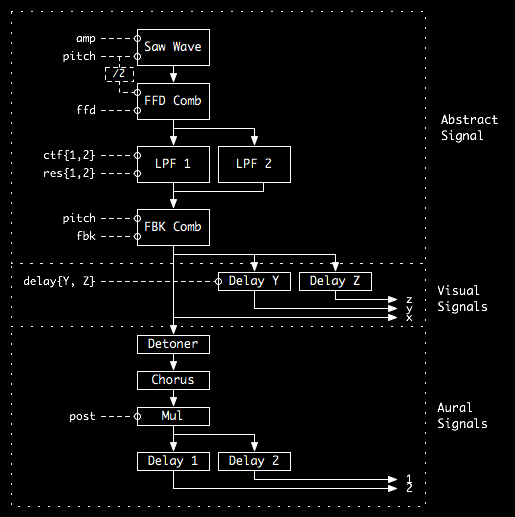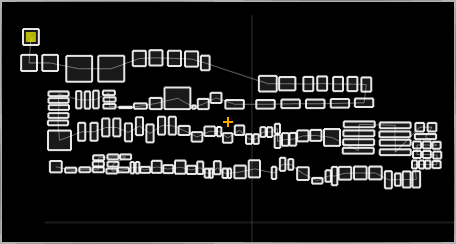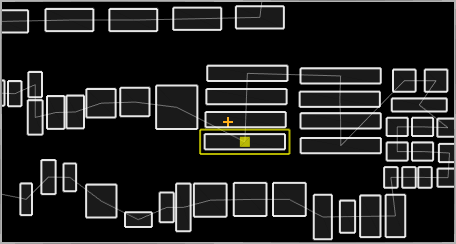S Phase
Computer-generated audio/visual workLance Putnam (2007), 8 min, 35 sec
Video: High-res (720p, 521 MB), Low-res (352x288, 35 MB)
Stills








About
S Phase is a musical metaphor of the work a cell undergoes during interphase to prepare for division. S phase is the part of the cell cycle where DNA is replicated. This work was inspired by observing that Lissajous figures made from harmonic waveforms can be made to split into two symmetric pieces by removing even harmonics. This splitting resembles the appearance of chromosomes after a cell's S phase. The underlying construct of the piece is a single low-frequency harmonic waveform shaped by various filters and delays. The filters control the curvature of the form and the delays cause the form to split into several pieces. Two additional delayed versions of the waveform are used to create a coherent three-dimensional Lissajous figure. This mapping of time onto space reveals the phase relationships of a complex waveform- something hidden from our sense of hearing. Observing the fact that sounds in nature are produced by disturbances, a frequency-domain technique of "detoning" is used to remove spectral components of the waveform that do not change in amplitude over time. The piece was composed using custom software that allowed the synthesis parameters of the system to be captured and morphed between continuously over time. The piece unfolds as one continuous evolution of the synthesis parameter space.Technical Design
S Phase was constructed using the Gamma signal processing and GLV GUI building C++ libraries. The basic idea behind the composition was to have a single abstract signal that could be instantiated into aural and visual representations. The signal generation is based on traditional sound synthesis techniques of subtractive synthesis and phase vocoding. The instrument consists of a saw wave filtered by a feed-forward comb filter, two parallel resonant low-pass filters, and a feedback comb filter. The first feedforward comb filter tracks the pitch of the saw wave and allows control over the amplitude of even and odd harmonics. The low-pass filters control the sonic brightness and visual sharpness of the curve. The feedback comb filter allows individual harmonic sets to be accentuated and visual "form replication" if the delay is long enough.
Audio/visual synthesis instrument
The score for the piece is a sequence of parameter state spaces with different interpolation curves and durations between them. The state spaces can be likened to the notes and the interpolation the work going from one note to the next. The piece is effectively the journey taken between specific points of interest.

The score is a traversal over time from one
parameter (P) state space (S) to another.
parameter (P) state space (S) to another.
To actually compose the piece, I made an interactive editor to control all the compositional parameters with sliders and save presets of parameters. The parameter editor lets you use sliders to change values or enter exact values with the keyboard. Several parameters, such as translate and rotation, can also be controlled with the mouse.

Parameter editor.
At any moment, a preset can be stored of the current parameter values. These presets are shown as boxes in a zoomable GUI view and can be moved around and resized to create a minimal-style score. Here is a screenshot of the entire score for the piece:

Screenshot of the score.
Here is the view zoomed into the middle section of the piece:

Closer view of score.
This composition system was designed to make this piece, however, it is general-purpose enough to be used to create "paths" through other parametric systems.